FOOD
11 Foods That Are Good For Liver Health
Published
1 year agoon
By
wpadminee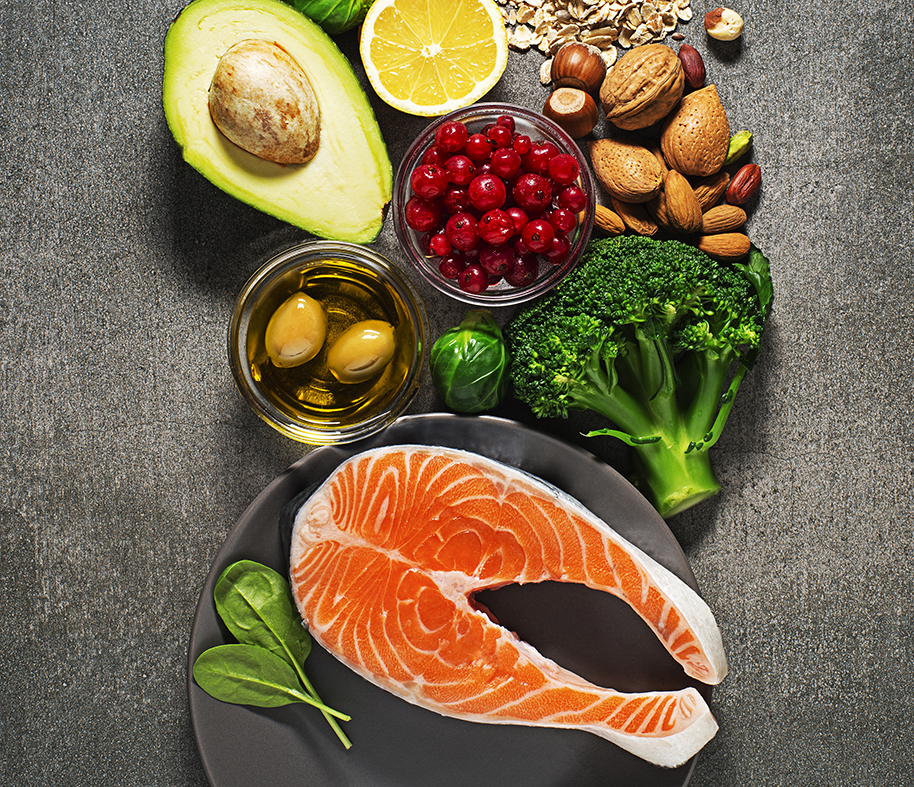
Maintaining liver health is crucial, and diet plays a very important role in achieving this. Numerous foods contain compounds known to enhance liver enzymes, guard against fat accumulation, and reduce inflammation and oxidative stress.
The liver handles various body processes, such as producing proteins, cholesterol, and bile, as well as storing vitamins, minerals, and carbohydrates.
Additionally, it plays a key role in breaking down toxins like alcohol, medications, and metabolic byproducts. Ensuring the well-being of your liver is needed for your overall health.
Having said that, let’s take a look at some of the foods you need to ensure that your liver is healthy:
What are the best foods to eat for your liver?
1. Coffee
Coffee is an excellent beverage for promoting liver function. Drinking coffee protects the liver from disease, even for people who already have liver problems. It can reduce the chance of cirrhosis, or persistent liver damage, in those with chronic liver disease.

Drinking coffee may lower the chance of acquiring a common kind of liver cancer. It also has a favourable impact on liver disease and inflammation.
Coffee is linked to a lower risk of death in individuals with chronic liver disease, with the most significant advantages observed in those who consume at least 3 cups daily.
These benefits are believed to arise from coffee’s ability to prevent the accumulation of fat and collagen, as indicated in the 2016 review. Fat and collagen are crucial markers of liver disease.
Additionally, coffee raises levels of the antioxidant glutathione. Antioxidants play a role in neutralising harmful free radicals, which are naturally produced in the body and can potentially damage cells.
2. Tea
Tea is generally recognised as health-promoting, and there is evidence suggesting specific benefits for the liver. Green tea in particular can lower levels of liver enzymes in individuals with nonalcoholic fatty liver disease (NAFLD).
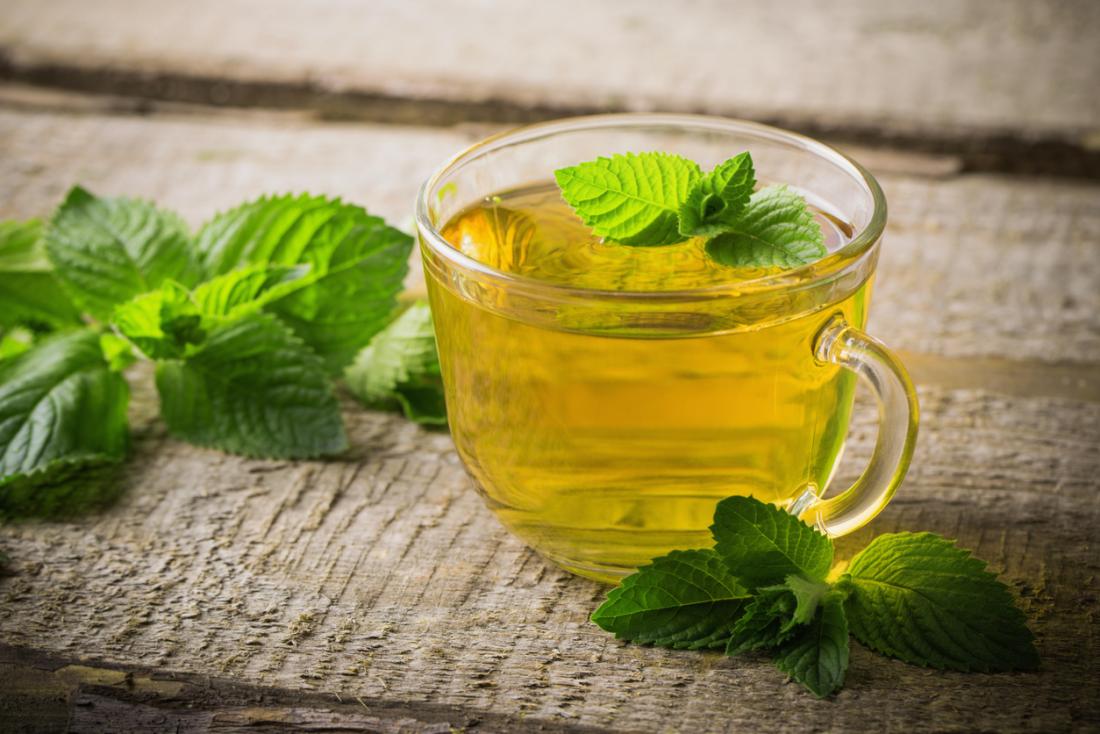
A study with similar findings revealed that supplementing with green tea extract for 12 weeks significantly reduced liver enzymes, specifically alanine aminotransferase (ALT) and aspartate aminotransferase (AST), in people with NAFLD.
Additionally, individuals who regularly drank green tea had a lower likelihood of developing liver cancer, with the lowest risk observed in those consuming four or more daily cups.
However, caution is advised, especially for individuals with liver issues, and consulting with a doctor before using green tea supplements is advised. There have been several reports of liver damage associated with the use of supplements containing green tea extract.
3. Grapefruit
Grapefruit is rich in antioxidants, particularly naringenin and naringin, which naturally safeguard the liver.
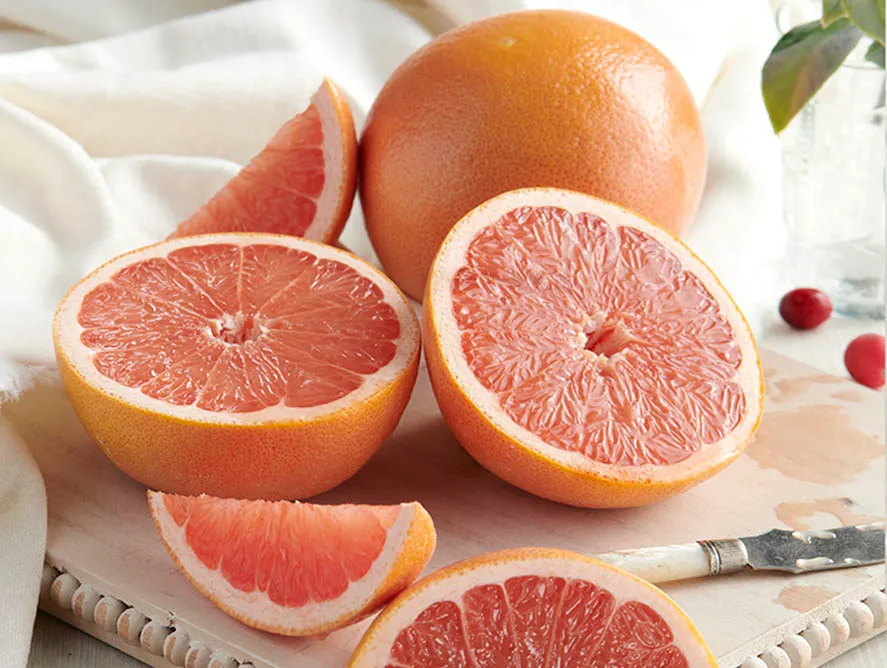
These antioxidants may play a role in decreasing the development of hepatic fibrosis, a harmful condition characterised by the accumulation of excessive connective tissue in the liver, often stemming from chronic inflammation.
While the evidence is not conclusive, the existing research suggests that grapefruit may contribute to liver health by potentially preventing damage and inflammation.
4. Blueberries and cranberries
Blueberries and cranberries are rich in anthocyanins, antioxidants responsible for their vibrant colours, and have been associated with various health benefits.

A study from 2021 revealed that the intake of a cranberry supplement for six months led to an improvement in hepatic steatosis, or fatty liver, particularly in individuals with nonalcoholic fatty liver disease (NAFLD).
Furthermore, test-tube studies have demonstrated that blueberry extract can inhibit the growth of human liver cancer cells. However, more research is necessary to determine if this effect can be replicated in humans.
Incorporating these berries into your regular diet can be a beneficial strategy to ensure that your liver receives the antioxidants essential for maintaining its health.
5. Grapes
Red and purple grapes, in particular, contain beneficial plant compounds that could potentially support liver health.

A 2020 study conducted in rats indicates the potential benefits of grapes and grape juice, but it remains unclear if these findings from animal studies could also directly apply to humans.
These benefits include:
- lowering inflammation
- preventing cell damage
- increasing antioxidant levels
6. Prickly pear
Opuntia ficus-indica, or prickly pear, is a popular edible cactus. People frequently consume the fruit and its juice.
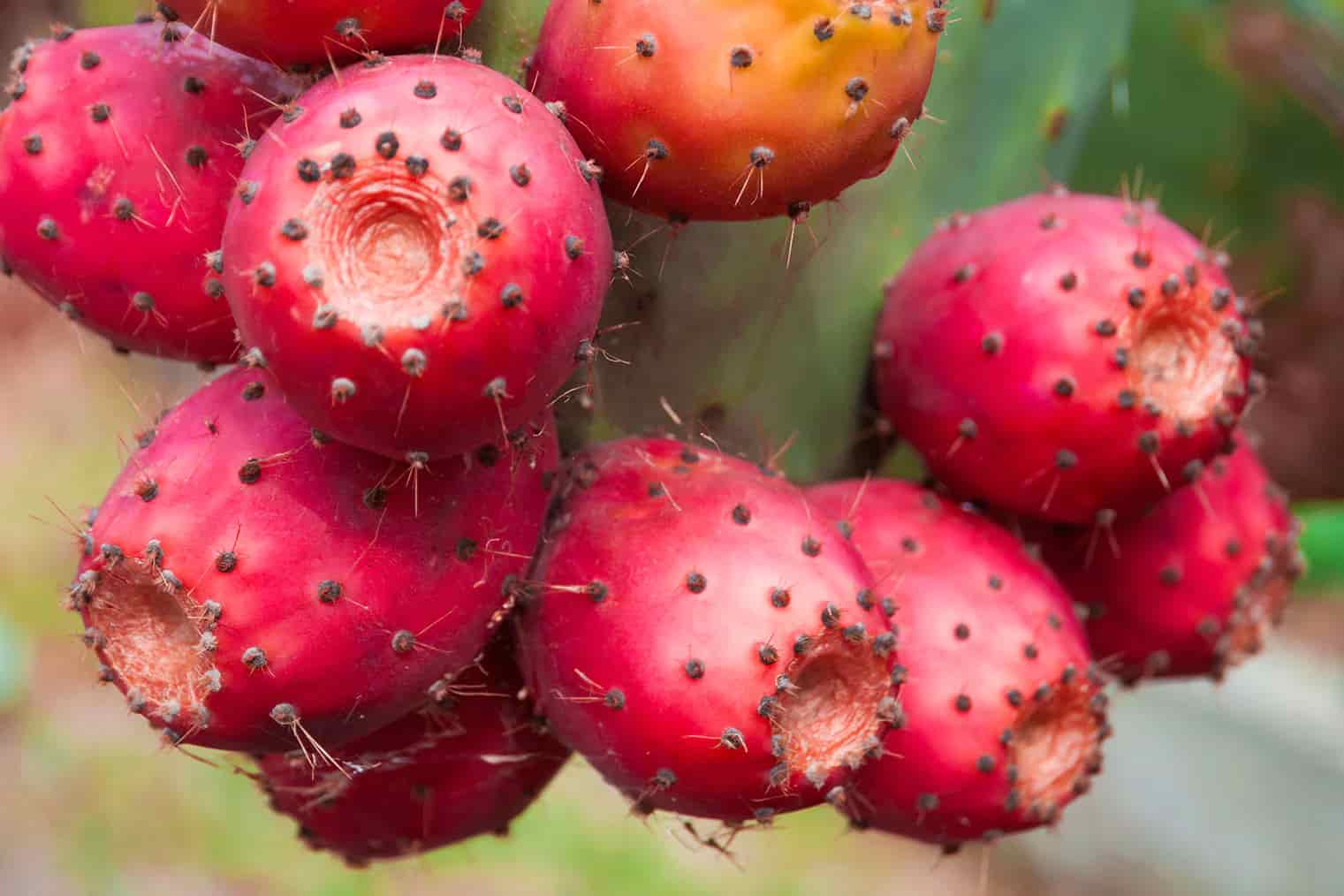
Traditionally, it has been used to treat the following conditions:
- Wounds and weariness
- Gastrointestinal troubles
- Liver illness.
A 2016 study suggests that extracting this herb may help alleviate hangover symptoms.
Prickly pear may also protect the liver from alcohol toxicity due to its anti-inflammatory and antioxidant capabilities.
More human trials are needed, particularly those involving prickly pear fruit and juice rather than extract. However, studies have shown that prickly pear has a favourable effect on the liver.
7. Beetroot juice
Beetroot juice contains nitrates and antioxidants called betalains.

Beetroot juice has been demonstrated in animal tests to prevent liver inflammation and oxidative damage.
However, while animal studies appear encouraging, further research is needed to validate the benefits of beetroot juice for human liver function.
8. Cruciferous vegetables
Cruciferous vegetables are noted for their high fibre content and unique flavour. They also have a high concentration of useful plant components.
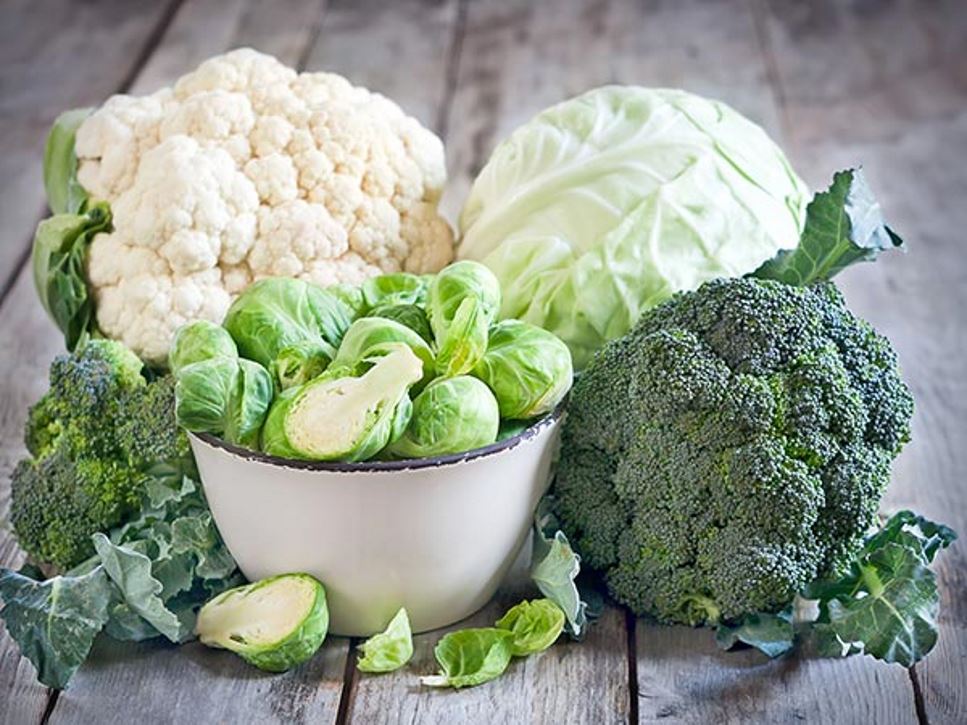
Examples of cruciferous veggies include:
- Broccoli
- Brussels sprouts
- Cabbage
- Kale
- Cauliflower
Science says that veggies like broccoli, cauliflower, and kale might help your liver. Research on mice showed that eating broccoli caused fewer liver problems. While more studies on people are needed, these veggies seem good for liver health.
9. Nuts
Forget boring salads! Snacking on a handful of nuts might be doing your liver a big favour. These tiny powerhouses are loaded with healthy fats, antioxidants, and vitamins that act like tiny bodyguards for your liver.

Studies even suggest that people who eat more nuts are less likely to develop a condition called fatty liver disease. While scientists are still figuring out exactly how it works, it seems like the good stuff in nuts helps protect your liver from harm.
So, next time you’re looking for a healthy snack, grab a handful of almonds, walnuts, or your favourite nut and give your liver a little love. Remember, though, that more research is needed to confirm these benefits, but adding nuts to your diet is a delicious way to support your overall health, including your liver.
10. Fatty fish
Fatty fish like salmon and sardines are packed with omega-3 fats, the good kind that fight inflammation and protect your heart. Omega-3s can even help reduce liver fat, especially for people with fatty liver disease.
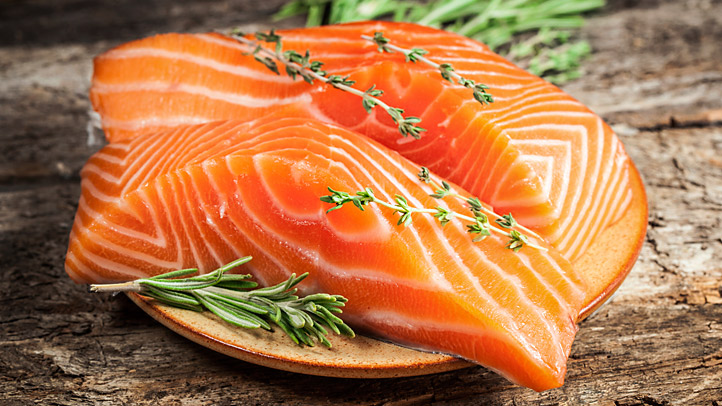
But here’s the catch: it’s not just about adding more omega-3s; it’s also about keeping a healthy balance with omega-6 fats, which are found in many oils and butter.
Think of it like a seesaw: too much omega-6 can tip the scales and actually harm your liver. So, while loading up on salmon is great, consider cutting back on those omega-6-rich foods to keep your liver happy and healthy.
11. Olive oil
Olive oil isn’t just delicious on salads; it’s also a champion for your liver. This heart-healthy fat, known for its benefits for your cardiovascular system and metabolism, also extends its magic to your liver function.
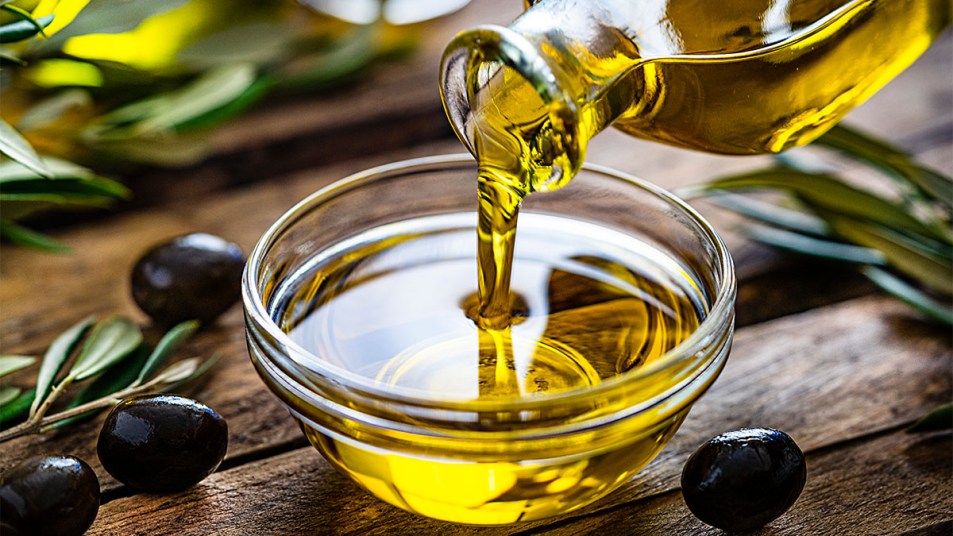
A study proves that a Mediterranean diet rich in olive oil might help older adults reduce their risk of developing fatty liver disease. Other studies have shown similar liver-loving effects, such as decreased fat buildup in the liver and improved blood levels of liver enzymes.
Remember, fatty liver accumulation is an early sign of potential liver problems, so olive oil’s positive impact on both liver fat and overall health makes it a valuable addition to your dietary routine.
What makes food good for your liver?
Want a healthier liver? Give it a food upgrade. Adding nutrient-packed foods to your diet is a powerful and easy way to do just that. Many foods are loaded with antioxidants, like tiny shields protecting your liver from damage and inflammation.
Plus, fibre-rich options help you manage weight and keep your liver functioning smoothly. And the good news doesn’t stop there! Some foods are brimming with protein and healthy fats, which might even aid in treating or preventing other conditions linked to liver problems, like diabetes.
What else can you do to keep your liver healthy?
Beyond delicious food choices, several other steps can keep your liver happy and healthy.
Here are some key ways to show your liver some love:
- Stay trim: Being overweight or obese can stress your liver, so maintaining a healthy weight is crucial. Think of regular exercise and balanced meals.
- Get moving: Regular physical activity is your liver’s best friend. Exercise helps lower harmful fats and reduce liver fat buildup. So lace up your shoes and get active!
- Mind your drinks: Alcohol isn’t kind to your liver. Limit your intake to the recommended levels to keep your liver functioning smoothly.
- Wash away worries: Good hygiene plays a big role in liver health. Washing your hands regularly helps prevent infections that can harm your liver.
- Practice safe sex: Unprotected sex increases the risk of hepatitis B and C, both harmful to your liver. Always use condoms and other barrier methods to stay safe.
Remember, small changes can make a big difference in your liver health. By following these tips and incorporating nutritious foods into your diet, you can keep your liver functioning optimally for years to come.
Get the latest and greatest updates right away! Join our exclusive WhatsApp channel and never miss out on exciting news again.
What foods should I eat if I have liver problems?
Give your liver a helping hand with these delicious foods. They’re packed with compounds and antioxidants that research suggests can support your liver’s health.
- Fruits: Grapefruit, blueberries, and cranberries are bursting with antioxidants that help shield your liver cells from damage.
- Fatty fish: Salmon, sardines, and other fatty fish are rich in omega-3s, which can reduce inflammation and improve liver fat metabolism.
- Olive oil: This healthy fat contains antioxidants that may benefit your liver function.
- Cruciferous veggies: Broccoli, Brussels sprouts, and their leafy green cousins contain compounds that may help detoxify your liver and protect it from harmful substances.
Consider adding these liver-loving options to your plate next time you’re planning your meals.
What foods should I not eat if I have liver problems?
While certain foods can support your liver health, others can do the opposite. Limiting your intake of the following foods can help keep your liver happy and functioning optimally:
- Red meat: While a source of iron and protein, consuming too much red meat, such as beef, pork, and lamb, can increase your risk of NAFLD. Aim for leaner protein sources like poultry, fish, or beans more often.
- Processed meats: Processed meats like bacon, sausage, and ham are often high in sodium, saturated fat, and nitrates, which can contribute to liver damage. Opt for unprocessed meats or plant-based alternatives whenever possible.
- Sugary drinks: Sugary drinks like soda, juice, and energy drinks are loaded with added sugars and fructose, which can lead to fatty liver disease. Choose water, unsweetened tea, or black coffee instead.
- Fast food: Fast food is typically high in unhealthy fats, refined carbohydrates, and added sugars, all of which can harm your liver health. Prepare meals at home whenever possible, using fresh, whole ingredients.
- Full-fat dairy products: While dairy can be a good source of calcium and vitamin D, full-fat dairy products like whole milk, cheese, and ice cream are high in saturated fat. Choose low-fat or fat-free options instead.
What can I drink to flush my liver?
Forget the idea of “flushing” your liver; it’s a myth. But fear not; there are delicious ways to support your liver’s health. Research suggests that some antioxidant-rich drinks like green tea, coffee, and even beetroot juice might lend a helping hand.
- Green tea: This tea is packed with antioxidants called catechins, which may improve liver enzyme levels and reduce fat deposits in the liver. So next time you need a pick-me-up, reach for a cup of green tea.
- Coffee: Coffee might not just perk you up in the morning but also benefit your liver. Moderate coffee consumption is linked to a reduced risk of liver disease. Just remember to keep it moderate, as too much caffeine can have negative effects.
- Beetroot juice: This juice contains nitrates, which can be converted into nitric oxide in the body. Nitric oxide helps improve blood flow and may also play a role in protecting the liver from damage. Enjoy beetroot juice in moderation, though, as its earthy taste can be strong for some.
Remember, these are just some options, and a healthy diet and lifestyle are key for overall liver health. Consult your doctor for personalised advice based on your individual needs.
The bottom line
Your liver is a silent superhero, working tirelessly behind the scenes to keep you healthy. But just like any hero, it needs a little support. The good news? Delicious food can be its kryptonite—in a good way.
These 11 amazing foods pack a punch when it comes to liver health.
- Reduced risk of liver disease and cancer.
- Boosted antioxidant and detoxification powers.
- Defence against harmful bad guys.
Adding these superfoods to your plate is a delicious and natural way to keep your liver functioning at its best. So why wait? Start incorporating them into your diet today and give your liver the love it deserves.
If you like this article, consider reading about Skipping Breakfast.
You may like
-


4 Tips For A Stress-Free Cooking Experience This Christmas
-
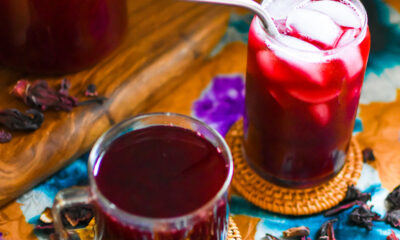

3 Best Nigerian Drink Recipes To Share Love This Season
-


More Benefits To Pineapple Than You Think? Check These Out
-
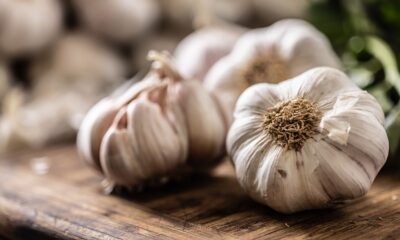

5 Health Benefits Of Cooking With Garlic
-


Are Alcoholic Drinks Only Harmful? See Surprising Health Benefits
-


Here’s The Best Recipe For Making Rice Fritters
FOOD
4 Tips For A Stress-Free Cooking Experience This Christmas
Published
4 months agoon
December 22, 2024By
wpadminee
The Christmas season is a time for joy, family, and delicious meals. However, cooking can often feel overwhelming, especially with the holiday hustle. With the right approach, cooking Christmas meals can be a stress-free experience.
Here are four practical tips for a stress-free cooking experience this Christmas.
1. Plan Ahead for Every Detail
Preparation is the key to success in the kitchen. Start by creating a detailed menu. Write down the dishes you want to make, the ingredients you need, and the estimated time for each recipe. This planning ensures you stay organised.
Invest time in grocery shopping early. Stores can be crowded closer to Christmas, so getting what you need in advance helps avoid the rush.
Batch-process tasks like peeling vegetables or marinating meat a day or two before. Following these tips for stress-free cooking keeps last-minute chaos at bay.
2. Simplify Your Menu
Christmas meals don’t need to be extravagant to be memorable. Focus on a few key dishes that everyone loves rather than a spread that leaves you exhausted. Choose recipes that are easy to prepare and don’t require constant attention.
For desserts, consider make-ahead options like pies or cookies. These can be prepared in advance, allowing you to spend more time with your guests. Simplifying your menu is one of the best tips for stress-free cooking this Christmas.
3. Use Time-Saving Tools and Techniques
Modern kitchen gadgets are lifesavers during Christmas. Slow cookers, food processors, and stand mixers can help speed up the process while reducing effort.
For large meals, use your oven efficiently. Bake multiple dishes at once if they require the same temperature. Pre-chop ingredients or buy pre-cut options to save valuable time.
Embrace these tips for stress-free cooking to make your holiday meal prep smoother and faster.
4. Delegate and Involve Others
You don’t have to do everything yourself. Share the workload with family or friends. Assign simple tasks like setting the table, washing vegetables, or stirring sauces to others.
If guests offer to bring a dish, accept their help. Potluck-style dinners reduce your cooking burden while adding variety to the table.
Delegating responsibilities is among the most effective tips for stress-free cooking, ensuring you enjoy the process too.
Cooking for Christmas doesn’t have to be a source of stress. By planning ahead, simplifying your menu, using time-saving techniques, and involving others, you can create a joyful and memorable meal.
These four tips for stress-free cooking will not only lighten your load but also let you focus on the true spirit of the season: togetherness and gratitude.
Keep these strategies in mind as you prepare your holiday feast. Merry Christmas and happy cooking!
For more reads, visit here.
FOOD
3 Delicious Recipes For Making Akidi (Black Beans)
Published
4 months agoon
December 8, 2024By
wpadminee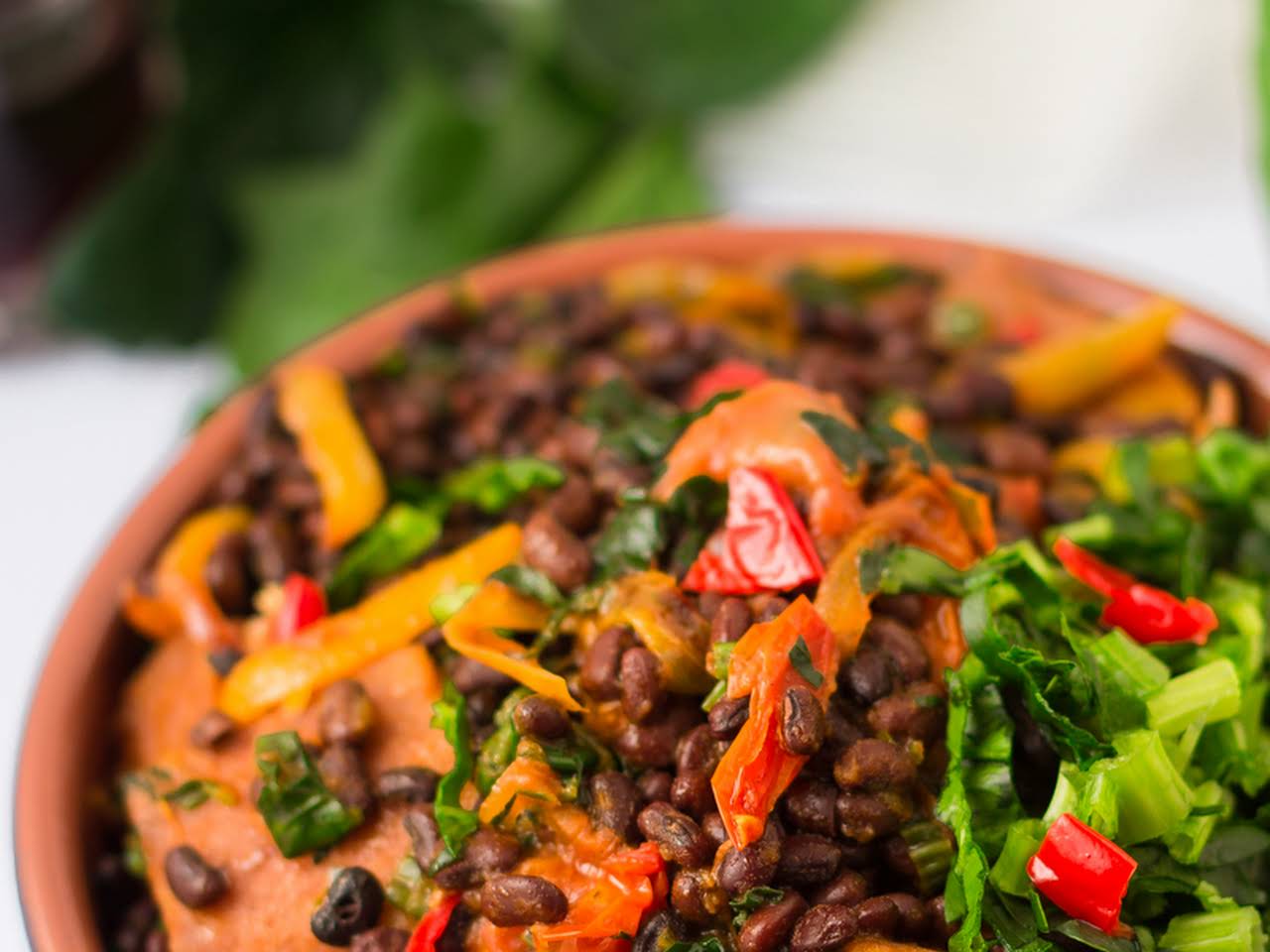
Akidi (black beans) recipes are a cornerstone of Enugu State’s culinary heritage, enjoyed widely across Nigeria and Africa. This versatile legume, rich in protein, fibre, and essential vitamins, makes it a nutritious staple in many homes.
Originating from Enugu, akidi holds a special place in traditional dishes, offering robust flavour and health benefits.
If you’re looking to expand your cooking repertoire, these three delicious akidi (black beans) recipes will elevate your meals.
Whether you’re an experienced chef or a kitchen novice, each akidi (black beans) recipe provides a unique taste experience.
Embrace the richness of Enugu’s culture and impress your family with these flavourful and nutritious dishes featuring the beloved black beans.
Recipe 1: Classic Akidi Soup
Ingredients:
- 1 cup dried black beans (akidi)
- 1 large onion, chopped
- 2 scotch bonnet peppers, chopped
- 2 tablespoons palm oil
- 1 teaspoon dried crayfish
- 1 teaspoon salt
- 1/2 teaspoon black pepper
- 1 stock cube
- Water
Instructions:
- Soak the beans: Rinse the black beans and soak them in water overnight.
- Cook the beans: Drain the soaked beans and add them to a pot with fresh water. Bring to a boil, then reduce heat and simmer until the beans are tender.
- Sauté the aromatics: Heat the palm oil in a separate pot. Add the chopped onion and scotch bonnet peppers, and sauté until fragrant.
- Combine the ingredients: Add the sautéed ingredients to the pot of cooked beans. Stir in the dried crayfish, salt, black pepper, and stock cube.
- Simmer and serve: Simmer the soup for an additional 10-15 minutes, or until the flavours are well combined. Serve hot.
Recipe 2: Akidi with Spinach and Plantain

Ingredients:
- 1 cup cooked black beans (akidi)
- 1 bunch spinach, chopped
- 2 ripe plantains, sliced
- 1 onion, chopped
- 2 cloves garlic, minced
- 1 teaspoon ginger, grated
- 1 teaspoon curry powder
- 1/2 teaspoon turmeric powder
- Salt to taste
- Vegetable oil
Instructions:
- Heat the vegetable oil in a pot. Add the onion, garlic, and ginger, and sauté until fragrant.
- Add the spinach: Add the chopped spinach to the pot and stir until wilted.
- Combine the ingredients: Add the cooked black beans, curry powder, and turmeric powder to the pot. Stir to combine.
- Fry the plantains: In a separate pan, fry the plantain slices until golden brown.
- Serve: Serve the akidi and spinach mixture with the fried plantains.
Recipe 3: Akidi with Smoked Fish and Vegetables

Ingredients:
- 1 cup cooked black beans (akidi)
- 1 smoked fish, crumbled
- 1 large onion, chopped
- 2 carrots, diced
- 1 green bell pepper, diced
- 1 teaspoon thyme
- 1/2 teaspoon black pepper
- Salt to taste
- Vegetable oil
Instructions:
- Heat the vegetable oil in a pot. Add the onion, carrots, and bell pepper, and sauté until softened.
- Add the beans and smoked fish: Add the cooked black beans and crumbled smoked fish to the pot. Stir to combine.
- Season and simmer: Season with thyme, black pepper, and salt. Simmer for 10-15 minutes, or until the flavours are well-combined.
- Serve: Serve the akidi with smoked fish and vegetables hot with rice, yam, or bread.
These three akidi (black beans) recipes are just a starting point. Feel free to experiment with different ingredients and flavours to create your own unique dishes.
Remember, the key to a delicious akidi dish is to use high-quality ingredients and to cook slowly to allow the flavours to develop.
Whether you’re a seasoned cook or a novice in the kitchen, these akidi (black beans) recipes are a great way to enjoy this nutritious and flavourful legume.
For more articles on food recipes, visit here.
FOOD
5 Health Benefits Of Cooking With Garlic
Published
4 months agoon
December 7, 2024By
wpadminee
Garlic is more than just a flavour enhancer; it offers numerous health benefits that have been celebrated for centuries. Incorporating garlic into your meals not only enriches the taste but also boosts your overall well-being.
Let’s explore five key health benefits of garlic, emphasising why this simple ingredient deserves a spot in your kitchen.
1. Boosts Heart Health
Garlic is renowned for its heart-protective properties. It helps lower blood pressure and reduces cholesterol levels, which are crucial factors in maintaining cardiovascular health.
Allicin, a compound found in garlic, relaxes blood vessels, improving blood flow and reducing the risk of heart disease.
Regular consumption of garlic may also prevent artery hardening, a condition known as atherosclerosis. Clearly, one of the primary health benefits of garlic is its contribution to a healthy heart.
2. Strengthens the Immune System
Garlic acts as a powerful immune booster. Its antibacterial, antiviral, and antifungal properties help the body fend off infections. Rich in antioxidants, garlic combats free radicals that can damage cells and contribute to illness.
Cooking with garlic regularly can support your immune system, making it more resilient against common colds and flu. This vital health benefit of garlic makes it a natural defence mechanism.
3. Improves Digestive Health
Garlic promotes healthy digestion by stimulating the production of digestive enzymes. Its antimicrobial properties can help balance gut flora, reducing harmful bacteria and promoting beneficial ones.
Additionally, garlic may reduce inflammation in the gut, alleviating symptoms of conditions like irritable bowel syndrome (IBS).
Including garlic in your diet can improve overall digestive function, emphasising another essential health benefit of garlic.
4. Enhances Bone Health
Surprisingly, garlic may also support strong bones. It contains minerals like calcium, manganese, and selenium, which are vital for bone density and strength.
Some studies suggest that garlic consumption can increase estrogen levels in women, potentially reducing the risk of osteoporosis.
This lesser-known health benefit of garlic highlights its role beyond the kitchen, contributing to long-term skeletal health.
5. Supports Detoxification
Garlic aids the body’s natural detoxification process by activating liver enzymes that help eliminate toxins. Its sulfur compounds enhance liver function, enabling the body to flush out heavy metals and harmful substances more efficiently.
Regularly cooking with garlic can provide a natural cleanse, supporting overall vitality. This detoxifying health benefit of garlic underscores its importance for maintaining internal balance.
Incorporating Garlic into Your Diet
Maximise these health benefits by adding garlic to soups, stir-fries, and sauces. Crush or chop it and let it sit for a few minutes before cooking to enhance its beneficial compounds.
Remember, the health benefits of garlic are most potent when it’s used fresh and minimally cooked.
Cooking with garlic not only elevates your culinary creations but also offers significant health advantages. Embrace this versatile ingredient and enjoy the multiple health benefits of garlic with every meal.
Would you like more articles or additional tips? Check here.
Latest


Samsung Galaxy S25 Series Sets The Standard Of AI Phones As A True AI Companion
Samsung Galaxy S25 series sets the standard of AI phones as a true AI companion …Pioneering the multimodal era with...


5 Things To Expect In Afrobeats In 2025
Afrobeats is poised to reach unprecedented heights in 2025 as Nigerian music continues its remarkable global ascent. The genre’s explosive...


Here Are The 7 Most Ancient Countries On Earth
The oldest countries in the world stand as remarkable testaments to human civilisation, each containing landscapes and monuments that narrate...


Why Self-Reflection Is More Important Than Resolutions
Millions of people embark on a yearly ritual: they sit down with a notebook and pen, eager to craft a...


Nollywood Director, Kemi Adetiba Teases King Of Boys 3
Nollywood director Kemi Adetiba has revealed that another instalment of King of Boys will be released on December 25, 2025....


John McEnroe Says He Can Be The Commissioner Tennis Needs Amid Doping Crisis
Recent doping controversies involving top players have not damaged tennis’s reputation, but John McEnroe believes that appointing a single commissioner...


“Everybody Loves Jenifa” Becomes Nollywood’s Highest-Grossing Film Of All Time
Nollywood filmmaker Funke Akindele has achieved a historic milestone with her latest film, “Everybody Loves Jenifa.” The film has officially...


FG To Premiere TV Series, “Hidden Riches” On Mining Sector On January 25
Nigeria’s Federal Government will launch an ambitious television drama series focused on the nation’s mining sector, premiering “Hidden Riches” on...


Qing Madi Delivers A Soulful Performance Of “Favourite Pyscho”
Rising Afro-RnB sensation Qing Madi launches into 2025 with a mesmerising performance on the prestigious COLOURS platform, showcasing her latest...


Taiwo Awoniyi’s First Goal Of The Season Seals Nottingham Forest’s Win Over Wolves
Taiwo Awoniyi made a triumphant return to Premier League action. He scored in stoppage time to help Nottingham Forest crush...
-Ad-





